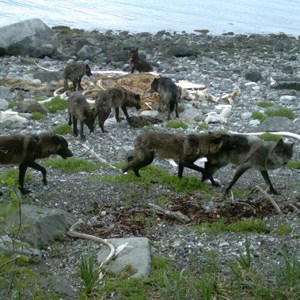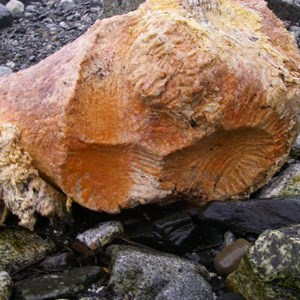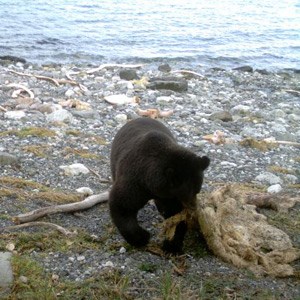
NPS Blubber Lovers Log: In early September, 2010 the massive carcass floated free of the beach and began floating down the bay. According to observers on hand in the dwindling daylight, there were several brown bears in attendance who seemed reluctant to let this food bonanza float away. One was reportedly onboard the carcass as it floated offshore. 
June 2011 The motion sensor camera deployed on 5/19 detected up to eight wolves repeatedly from 5/23 to 6/3.Markings and coloration of individuals identify this as the same pack that fed on the carcass at Scidmore Cut in 2010! Only 1 bear was observed during this time on 5/26, but he was a big one.It will be interesting to see just how long 1 dead whale will continue to feed the Glacier Bay ecosystem.
Biologists continued site visits to change batteries on the motion-sensor camera throughout the summer.The pack of wolves continued to feed on the carcass throughout the summer as evidenced by repeated photos of wolves (thousands!) from the motion-sensor camera, a heavily worn canine trail along the beach fringe, and wolf hair and teeth marks on the whale flesh and bones. As the flesh of the whale was reduced, there was increasing evidence of them eating the bones (photo below), particularly the round ends of ball joints.Bears also visited the carcass over the summer, but with less frequency than wolves. 
October 24, 2011
April 24, 2012 Biologists went back the site for the final time to retrieve the camera which had taken photos through January 9th.A large brown bear was chewing on bones on November 6th, and the pack of wolves with glossy thick winter coats (see below) scavenged on the bones as late as November 27th.The final mammal photographed at the site was a vole running across the snow on November 28th. By December 4th snow had pushed the camera so it was facing straight down and no further scavengers were documented. 
|
Last updated: September 24, 2024
